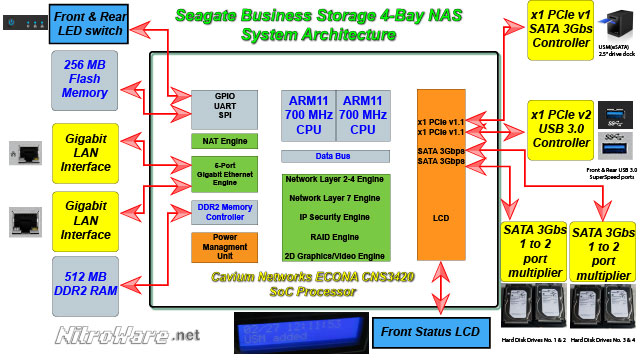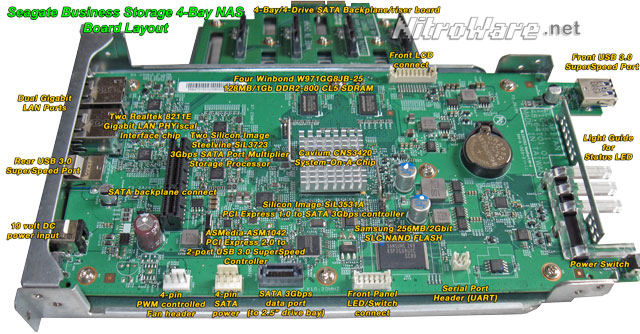Internal design and features
The Internals are two parts, a mainboard and SATA riser for the drive bays. Once dissembled it is clear hat an ODM has designed and manufactured for Seagate
Th heart of the system is a Cavium CNS3420 SoC Processor , designed specifically for Networking Devices with full offloading and hardware support for network stack, IP/SSL Security, RAID and NAT.
Despite using old ARM11 based CPU cores, Cavium claim their hardware engines allow for "Over 90% of a single ARM11 CPU core available as headroom, at peak performance" which is surprising given our testing.
The spec sheet is lengthy and not all features are implemented in the Seagate NAS
http://www.cavium.com/newsevents_Caviumnetworks_ECONA-CNS3XXX.html http://www.cavium.com/pdfFiles/CNS3XXX_PB_Rev0.1.pdf?
Although NAS being a target application, the chipset's ARM11 cores, 'slow' accelerators( 2Gbit/s for some) and only two PCIE lanes, two SATA 3Gbps ports, bottlenecks are apparent.
Both PCIE 1.1 lanes (2.5Ggbps) are used for external controllers to supplement the older chipset; for the eSATA USM dock (bottlenecked SATA-II 3Gbps, Silicon Image Sil3531 ) and for Two USB 3.0 ports (Bottlnecked 5Gbp/s, ASMedia ASM1042).
The two SATA 3Gbps ports in the Cavium chipset are split to Four ports using Silicon Image SiL3723 port muxes, further degrading bandwidth.
The chipset even has integral video codecs however we are unable to verify if these are used. PCB design, layout and component choice is excellent with brand name components and solid capacitors used

